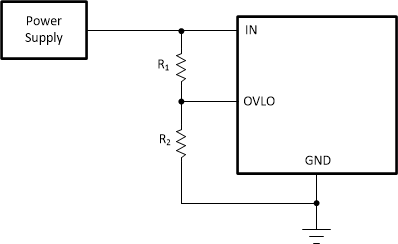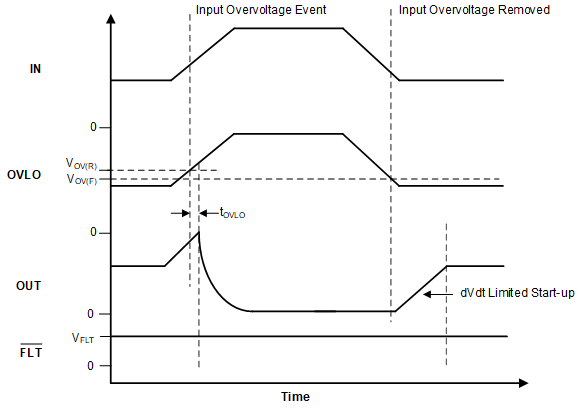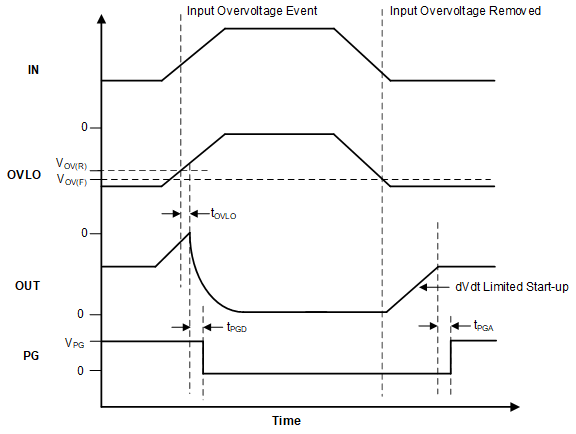ZHCSOF8C november 2021 – april 2023 TPS2597
PRODUCTION DATA
- 1 特性
- 2 应用
- 3 说明
- 4 Revision History
- 5 Device Comparison Table
- 6 Pin Configuration and Functions
- 7 Specifications
-
8 Detailed Description
- 8.1 Overview
- 8.2 Functional Block Diagram
- 8.3
Feature Description
- 8.3.1 Undervoltage Lockout (UVLO and UVP)
- 8.3.2 Overvoltage Lockout (OVLO)
- 8.3.3 Overvoltage Clamp (OVC)
- 8.3.4 Inrush Current, Overcurrent, and Short Circuit Protection
- 8.3.5 Analog Load Current Monitor
- 8.3.6 Overtemperature Protection (OTP)
- 8.3.7 Fault Response and Indication (FLT)
- 8.3.8 Power-Good Indication (PG)
- 8.4 Device Functional Modes
- 9 Application and Implementation
- 10Device and Documentation Support
- 11Mechanical, Packaging, and Orderable Information
8.3.2 Overvoltage Lockout (OVLO)
The TPS25970x and TPS25974x variants allow the user to implement overvoltage lockout to protect the load from input overvoltage conditions. The OVLO comparator on the OVLO pin allows the overvoltage protection threshold to be adjusted to a user-defined value. After the voltage at the OVLO pin crosses the OVLO rising threshold, VOV(R), the device turns off the power to the output. Thereafter, the devices wait for the voltage at the OVLO pin to fall below the OVLO falling threshold, VOV(F) before the output power is turned ON again. The rising and falling thresholds are slightly different to provide hysteresis. Figure 9-20 and Equation 2 show how a resistor divider can be used to set the OVLO set point for a given voltage supply.
 Figure 8-5 Adjustable Overvoltage
Protection
Figure 8-5 Adjustable Overvoltage
Protection Figure 8-6 TPS25970x Overvoltage Lockout
and Recovery
Figure 8-6 TPS25970x Overvoltage Lockout
and Recovery Figure 8-7 TPS25974x Overvoltage Lockout
and Recovery
Figure 8-7 TPS25974x Overvoltage Lockout
and Recovery